The southern half of Europe was experiencing scorching heat this week, but a strengthening heat dome over the Mediterranean will soon worsen the situation. It will induce more extreme heat across the southern half of Europe in the following days. The strongest heatwave of the summer of 2023 continues and will bring even higher temperatures, reaching nearly +45 °C in Spain, Italy, and Greece.
Over the weekend, some relief came with the temporarily mixed air mass from the recent severe weather outbreaks across south-central Europe. However, it won’t last long. The Mediterranean is overheating again. The following days will bring extremely high temperatures for many countries in the south, Spain, Italy, and later on Greece as well.
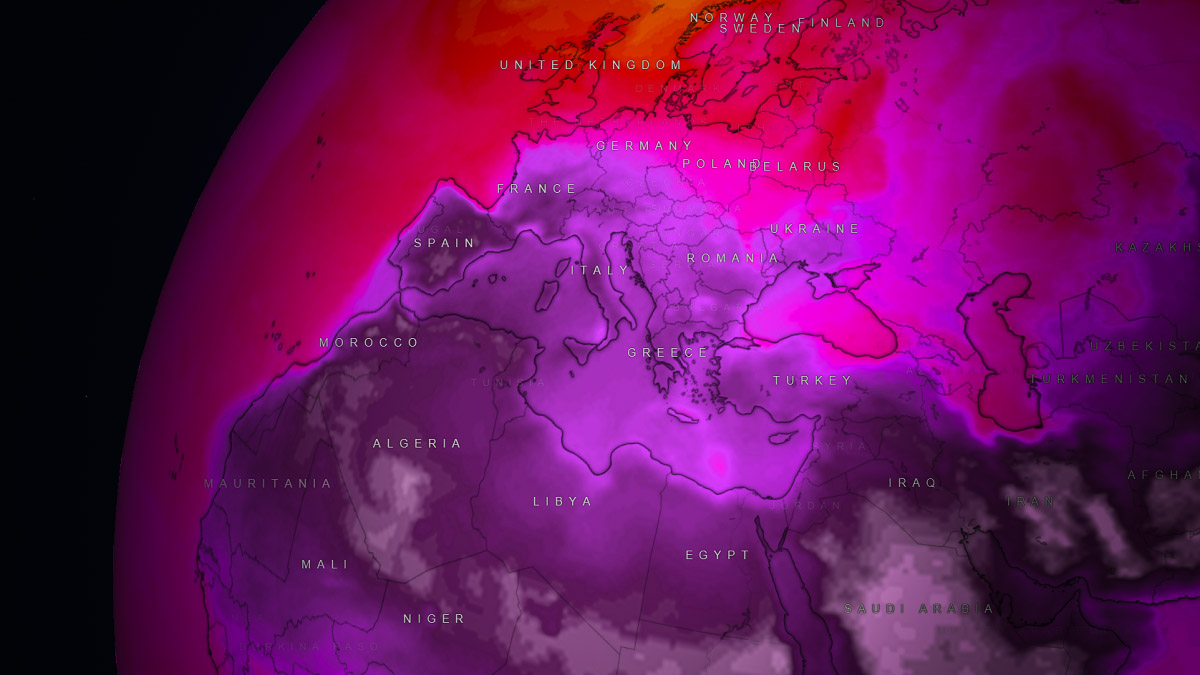
The heat has already been intensifying across the Iberian peninsula, southern Italy, Greece, and western Turkey on Saturday. The eastern coasts of the Aegean Sea experienced arid air mass from the Turkish plateau, pushing temperatures just shy below +45 °C.
Up to +40 °C was also again reported from eastern Spain. The upper 30s were observed in southern Italy. Temperatures surpassing 45 °C continued over Tunisia. This heat is gradually taking its turn farther north and east early next week and continue towards the weekend.
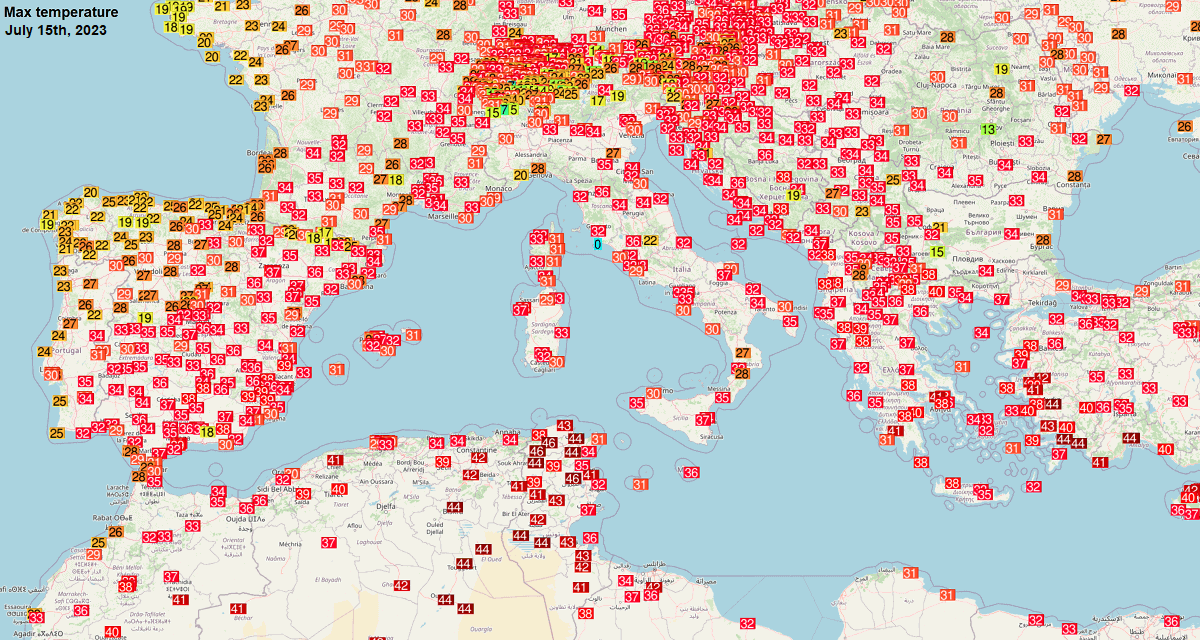
After Monday, temperatures are forecast to climb into the low to mid-40 °C across parts of Spain and southern Portugal, south-central Italy, and later over the south of Balkans, Greece in Particular.
Although Europe is already experiencing a powerful heatwave this month, the forecasted temperatures will be the highest of the summer season, especially for South Europe, Italy in particular. The animation below reveals the re-strengthening heat dome, leading to extreme heatwave gradually expanding into the Mediterranean, and the rest of southern Europe is attached.
The upper High pushes the heatwave further north into central Europe, but the heat should remain up to the mid-30s most of the time. Expect southern France, where temperatures will also reach 40s early next week.
As we mentioned, the leading feature in these heatwaves is the heat dome, a specific weather pattern that brings excessive heat and very high temperatures. Let’s talk about it first.
WHY HEAT DOME BRINGS EXTREME HEAT?
Let’s review the primary background cause of the intense heatwave in Europe. We used the term heat dome when severe heatwave events occurred in the past, in Europe or the United States, and Canada. Usually, the heat dome is the dominant feature of summer weather patterns on both continents.
Heat dome will be the term we will use when extremely high temperature develops; here is why.
The upper-level ridge pattern, which we know as the Upper High or blocking High, usually forms the heat dome. This weather pattern often brings high, sometimes record-challenging temperatures for the region underneath. We use this term when a broad area of high-pressure parks over a large portion of the continent. It usually stays there for several consecutive days or even weeks.
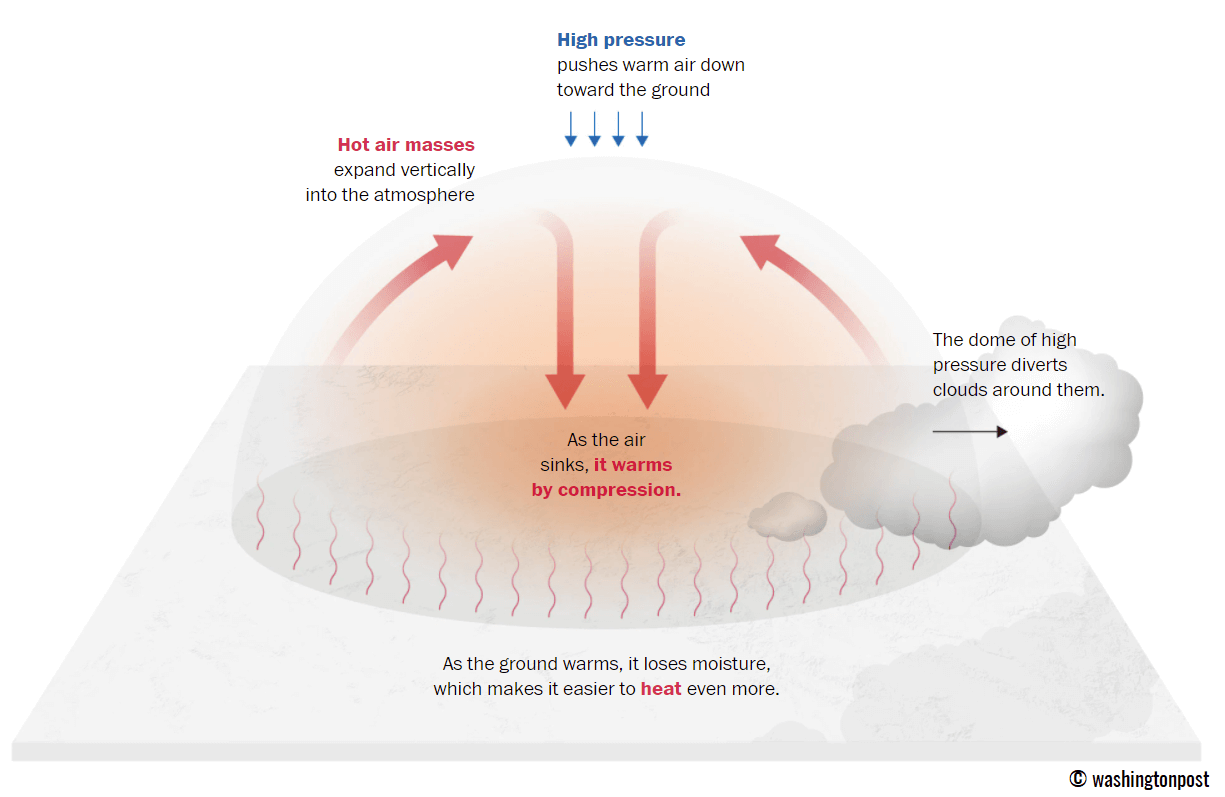
In simple terms, the heat dome is that it works like a lid on a pot. The extensive dome results in the trapping of a hot air mass at all levels underneath, sinking toward the ground. Air mass becomes particularly anomalous at the lowest elevations. Thus it creates very stable weather and often arid air mass with minimal chances for precipitation or even clouds—the sinking air parcels in the center of the heat dome result in rising temperatures.
Typically, much warmer and drier than usual weather results in a significantly enhanced wildfire threat due to developing drought or even worsening the ongoing, pre-existing, arid conditions. Heat dome is often also to blame for being responsible for deadly heatwaves worldwide.
Thus, the daily average and maximum temperatures under the heat dome are typically above average. Those could often challenge or even break existing historical records. Mainly if this feature develops during early summer or early autumn/fall.
DEEP LOW OVER WESTERN EUROPE WEAKENS, HEATWAVE GRADUALLY RE-STRENGTHENS INTO CENTRAL EUROPE
On Saturday, the general weather situation over Europe indicates a deep upper low over western Europe, with unsettled weather over Ireland and the UK. Ahead of it, one can notice an upper high over the Balkan peninsula. Hinting the southwesterly flow is underway in between the two.

The warmth has been re-emerging in central Europe, just a day after a refreshing air mass following severe weather outbreaks. But we can notice how much colder air mass is spreading in the wake of the Atlantic Low, thus bringing some relief to Spain and Portugal.
The low quite rapidly weakens on Sunday so that the cold air will vanish and the heatwave will begin re-intensifying.
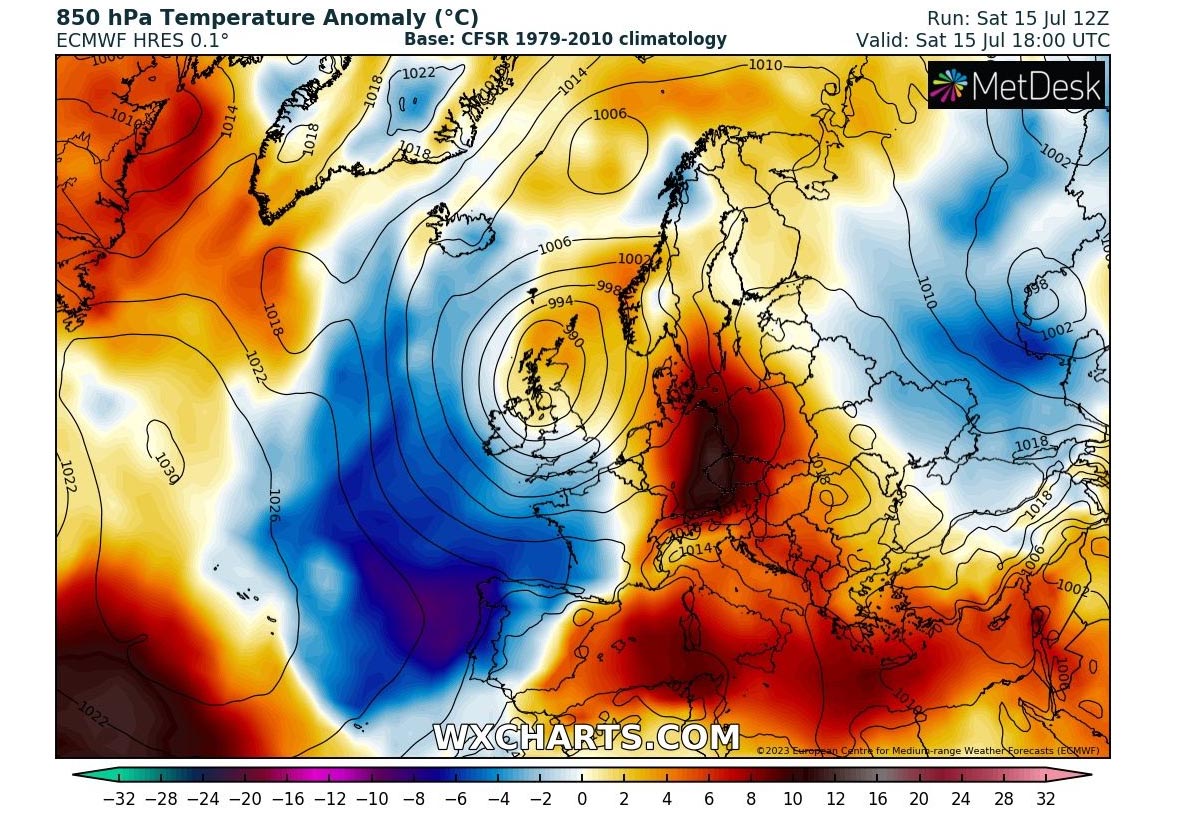
Towards Monday, a blocking weather pattern will be re-strengthening across northern Africa and is forecast to expand into south-southwestern Europe gradually.
Then, throughout the next week, it will expand across most of the Mediterranean under the newly developed heat dome.

Therefore, the weather favors a significant temperature increase across the Iberian Peninsula, most of the Mediterranean, and the southern Balkan Peninsula.
This pattern develops due to the significant upper-low emerging into Western Europe.
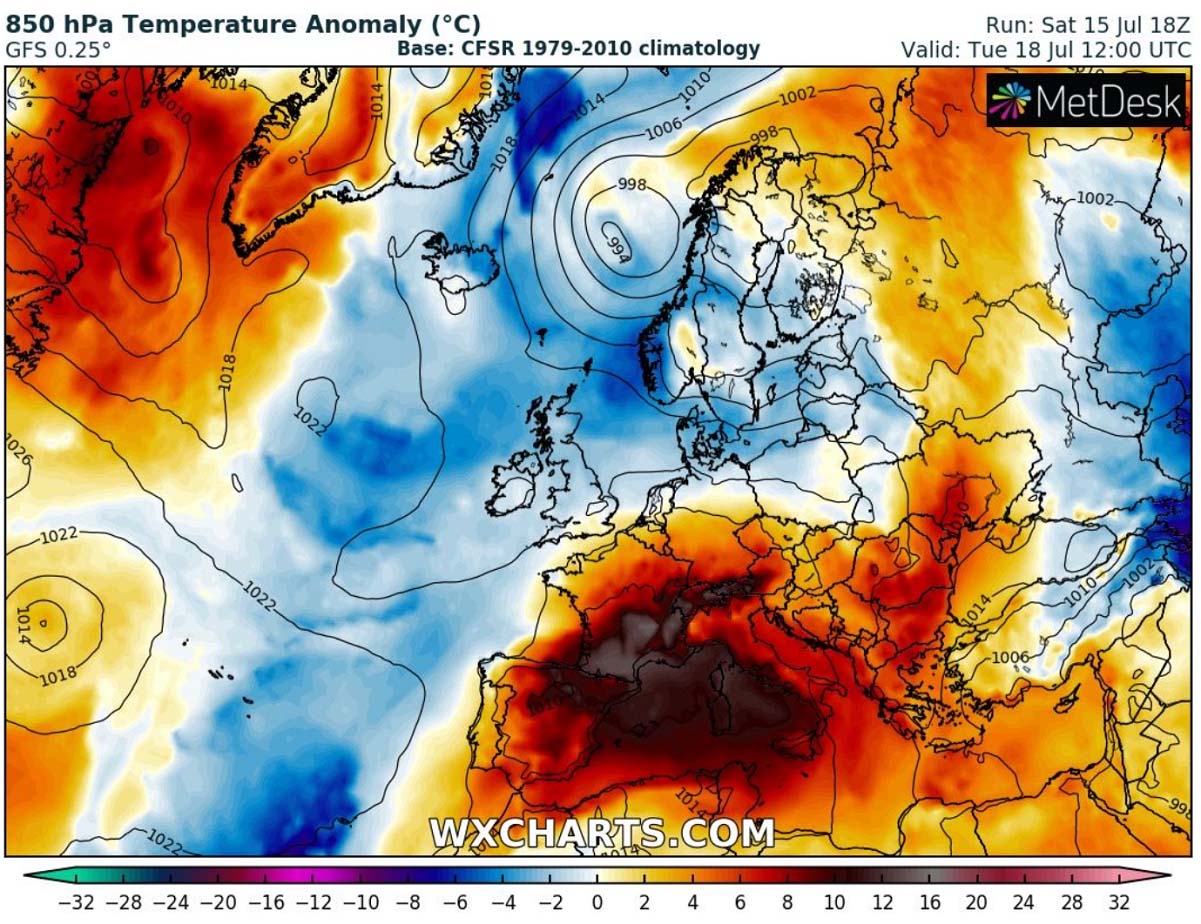
It establishes a significantly warmer southerly flow from northwestern Africa into southern Europe.
HEATWAVE EXPANDS INTO SOUTHERN EUROPE AGAIN, SPAIN TO REACH MID 40s AGAIN FOR SEVERAL DAYS
The first regions affected will be the far southern Mediterranean and the Iberian peninsula. Starting Monday, the temperature will push into the upper 30s over southern Portugal and low to mid-40s over the southern half of Spain.
Tuesday will bring similar conditions to this region while air mass significantly warms across northeast Spain. Around 42-43 °C will be possible during the peak afternoon hours.
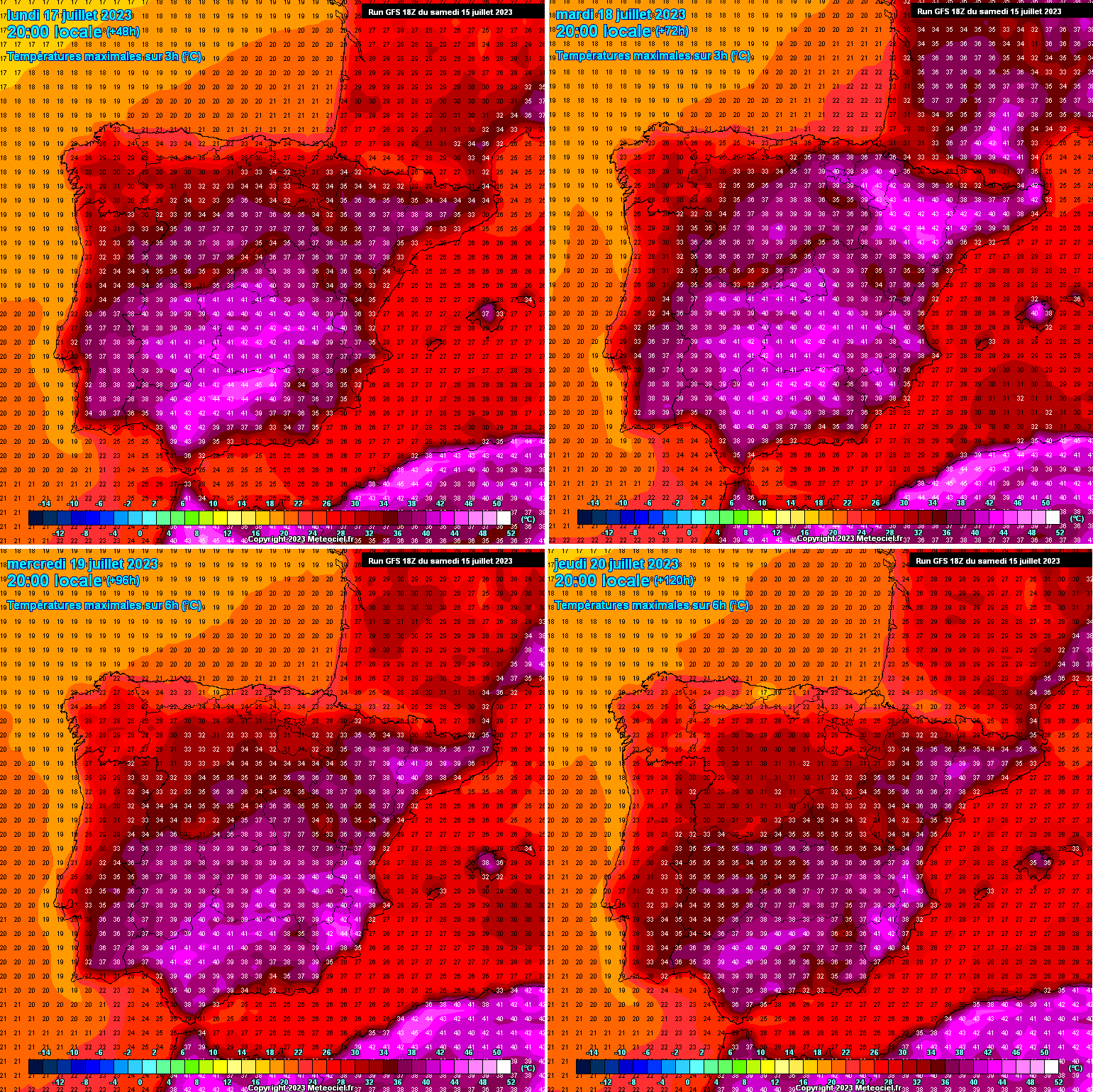
After Wednesday, the core of the heatwave should gradually slide east; therefore, at least northern Spain and Portugal will see lower temperatures again. This is thanks to colder maritime air mass from the Bay of Biscay, behind the frontal system farther north.
However, temperatures will remain scorching hot in south and east Spain. Generally peaking into around 41-43 °C on Wednesday and Thursday again.
HEATWAVE OVER FRANCE PEAKS ON TUESDAY, BRINGING LOW 40S FOR THE SOUTH
France will be in the middle of the large-scale features this time. Northern parts will be in more refreshing temperatures, while the south will experience the heat.
Only Tuesday is when temperatures surpass the 40s in the far southern valleys. Weather models forecast peak afternoon temperatures to around 42 °C in the south and 37-39 °C in central France.
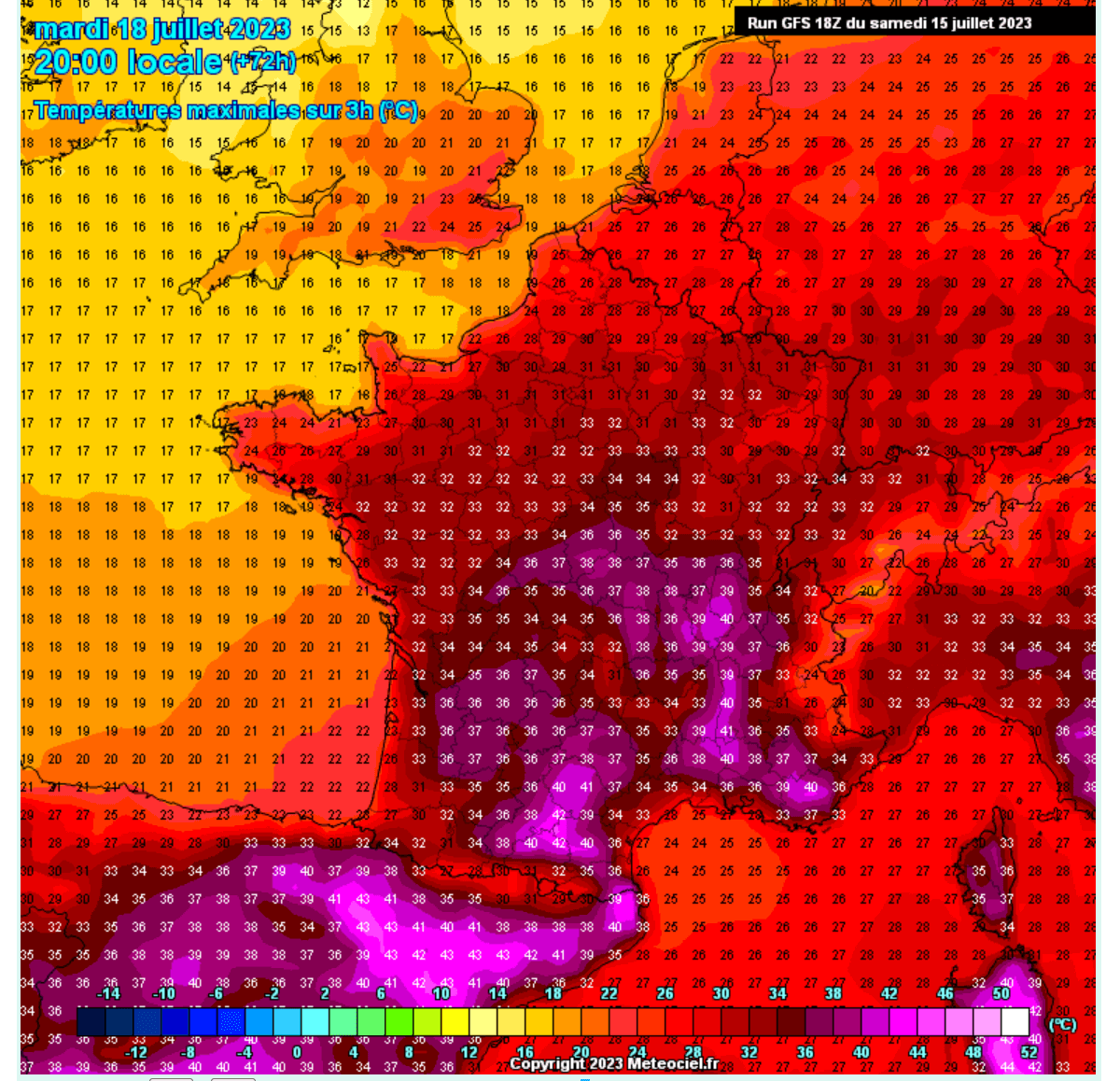
The push of significantly warmer air mass into France will be of a short breath, as Wednesday is forecast to bring several degrees lower temps. The Atlantic air mass will flush away the heat back into the Mediterranean.
Attached below is Tuesday’s 2m temperature anomaly over Europe. Notice how significantly anomalous the air mass from Spain to southern France, central Europe, Italy, and the Balkans.

As we can see, most of Europe will be experiencing above-normal temperatures that day.
ITALY IS NEXT IN THE LINE FOR TEMPERATURES ABOVE +40 °C, LASTING FOR SEVERAL DAYS
The strengthening heat dome results in an even stronger heatwave by midweek, with scorching heat from Algeria and Tunisia expanding over the Mediterranean. Italy will be overspread with very high temperatures this time too.
Starting Monday and Tuesday, south-central Italy will see low 40s, similar to Sicily and Sardinia island, with up to +43 °C possible. Northern Italy up to around 35 °C on both days.
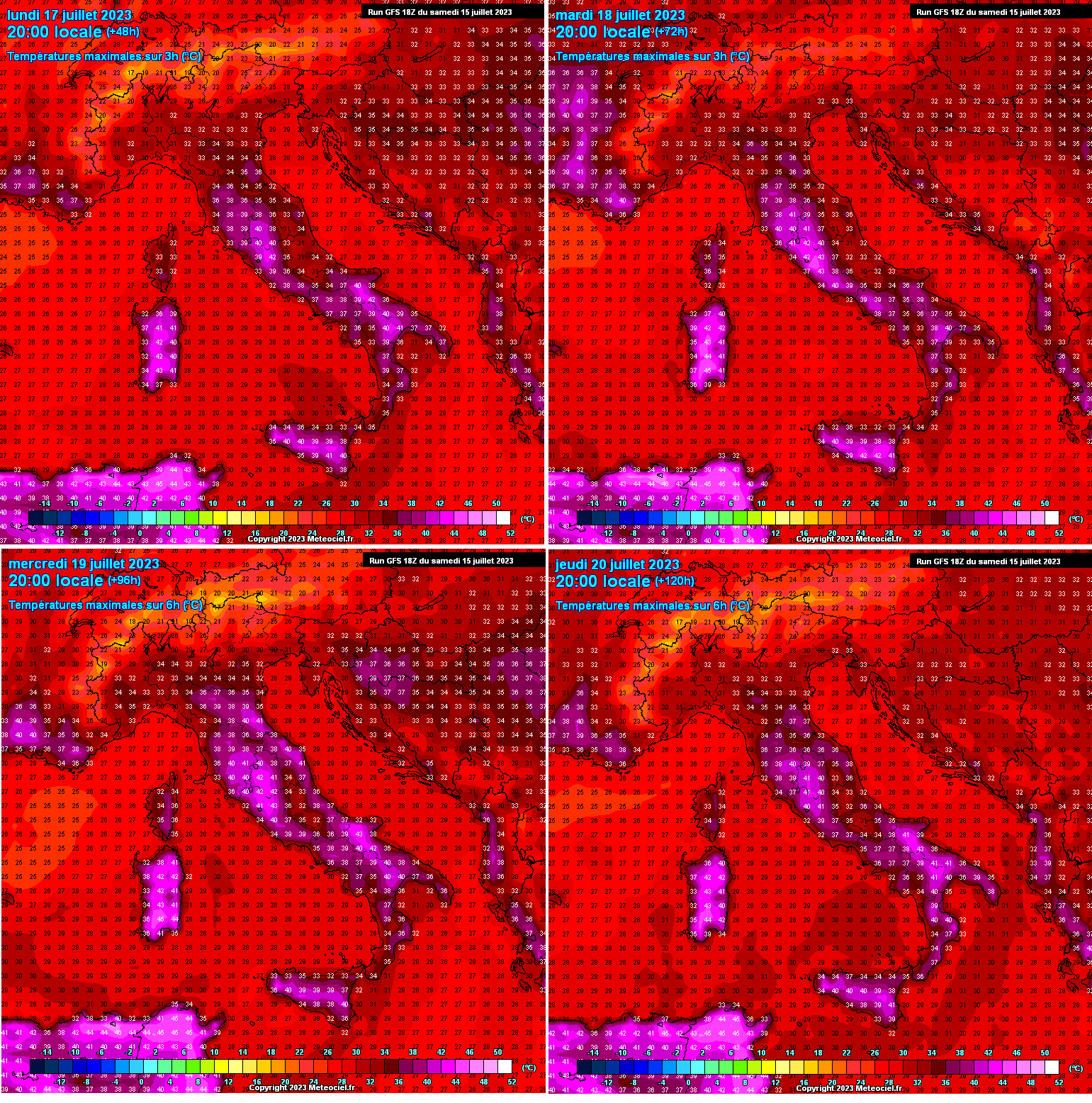
Heatwave peaks on Wednesday, bringing even higher temperatures to the country. The mid-40s will likely be reached across Sardinia and 40-43 °C in the central parts. With southwesterly flow over the Apennines, the southeastern portions of Po Valley plains could also go in the 40s on Wednesday afternoon.
Thursday will bring lower temperatures to the north but remain scorching hot in the south. Sardinia again around 43-44 °C.
THURSDAY AND FRIDAY PUSH HEAT MORE INTO SOUTHERN BALKAN PENINSULA, 40S LIKELY TO FOLLOW OVER GREECE AGAIN
After Thursday, the southern Balkan peninsula will generally be affected by scorching heat again. Widespread upper 30s to low 40s are likely from Albania across North Macedonia to Bulgaria and Greece.
Especially Greece will see the highest temperatures in the region on Friday. The highest temperatures could reach around +43 °C in some heat-prone areas.

It will also swelter over western Turkey; temperatures will climb above 40 °C again.
HOW LONG WILL THE HEATWAVE LAST?
Looking over the general mid-range trends, there are hints that the heatwave will lose its strength towards the following weekend over the Mediterranean. This change is due to the expansion of the sizeable upper-level low over the northern half of Europe, expanding towards the south.
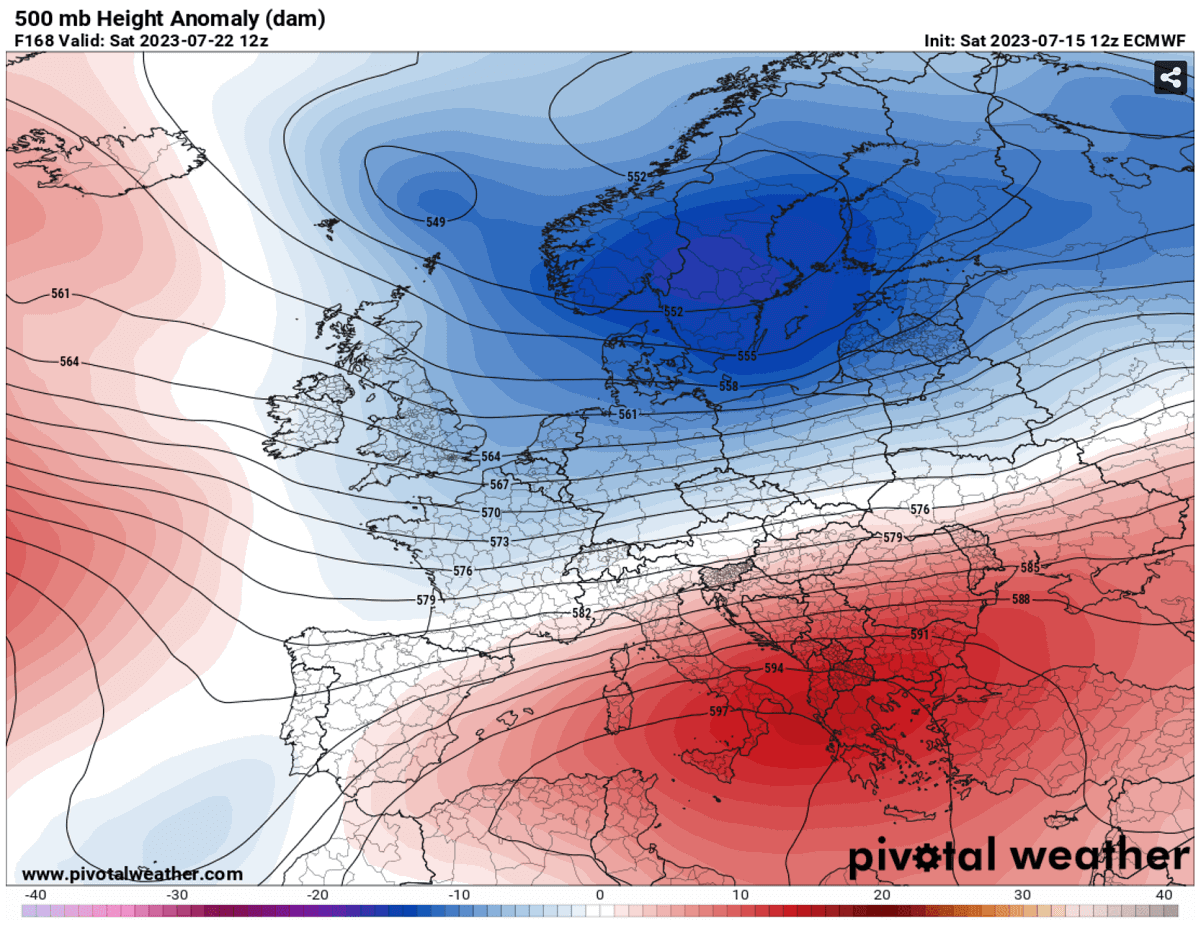
It leads to the deformation of the heat dome, so it parks towards the eastern Mediterranean and the southern Balkan peninsula.
As we can see on the temperature chart below, the heatwave is vanished from central Europe. Still, it remains particularly intense over southeastern Europe, with highly abnormal temperatures in the southern Balkans.

Although it is still a week ahead of us, the general weather model consensus is in good agreement scorching heat will remain for the region. The Saturday and Sunday temperature charts below indicate sweltering conditions could occur over the following weekend.
With more than 26 °C at the 850 mbar level, the peak temperatures near the ground would quickly push well above 40 °C. Even into the +45 °C range across many areas. Bulgarian lowlands and Greece in particular, and western Turkey as well.
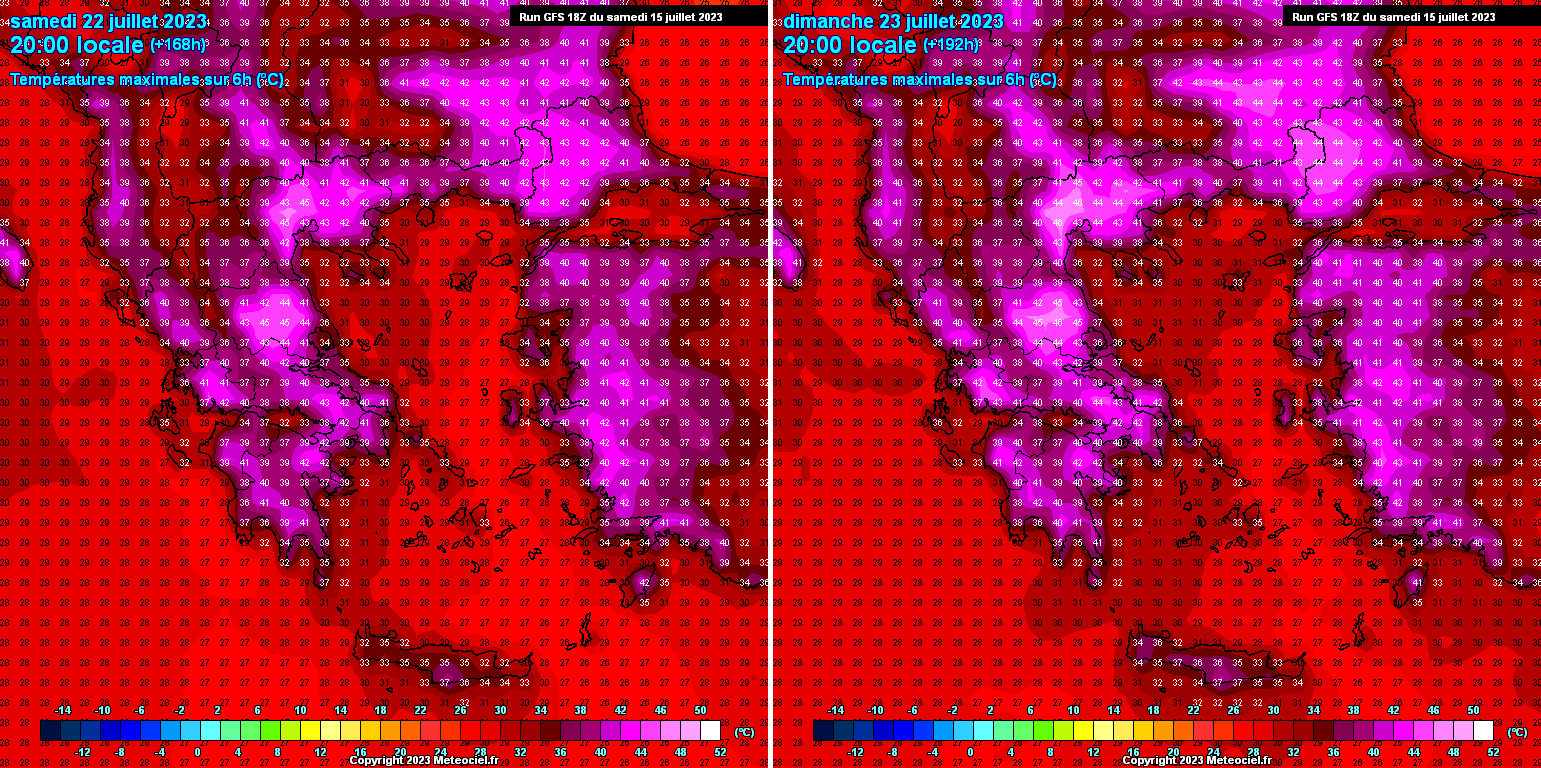
The below Meteogram forecast chart for Palma de Mallorca (Spain), Cagliari (Italy), and Athens (Greece) reveals an impressive prolonged heatwave for the western Mediterranean, south-central Italy, and Greece. All charts have no signs of rain but persistent, warm mid-levels. Thus leading to long-lasting heatwaves.
However, the upper-left chart for Palma indicated temperatures should gradually become lower after Friday, July 21st. At the same time, Cagliari continues scorching weather into the final week of July.
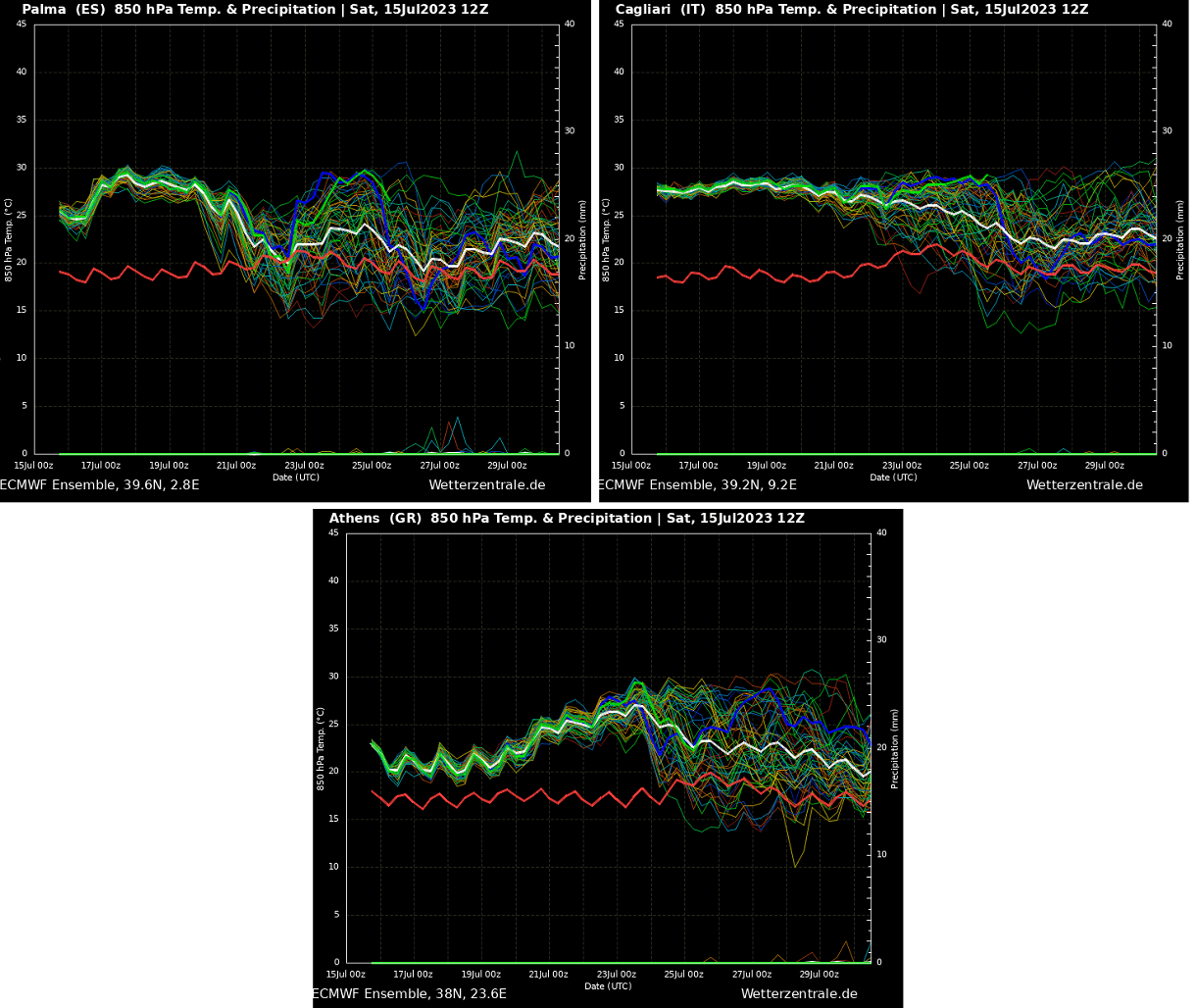
As we discussed earlier, the meteogram for Athens hints at the potential for the peak of this heatwave over the following weekend (July 23-25th).
HEALTH RISKS DURING A HEAT WAVE
An extended period of scorching weather, generally surpassing +35 °C but significantly above +40 °C, is physically challenging and presents an enhanced risk for health.
Sweltering weather, particularly in extended periods – heat waves – is uncomfortable but presents a significant health risk.
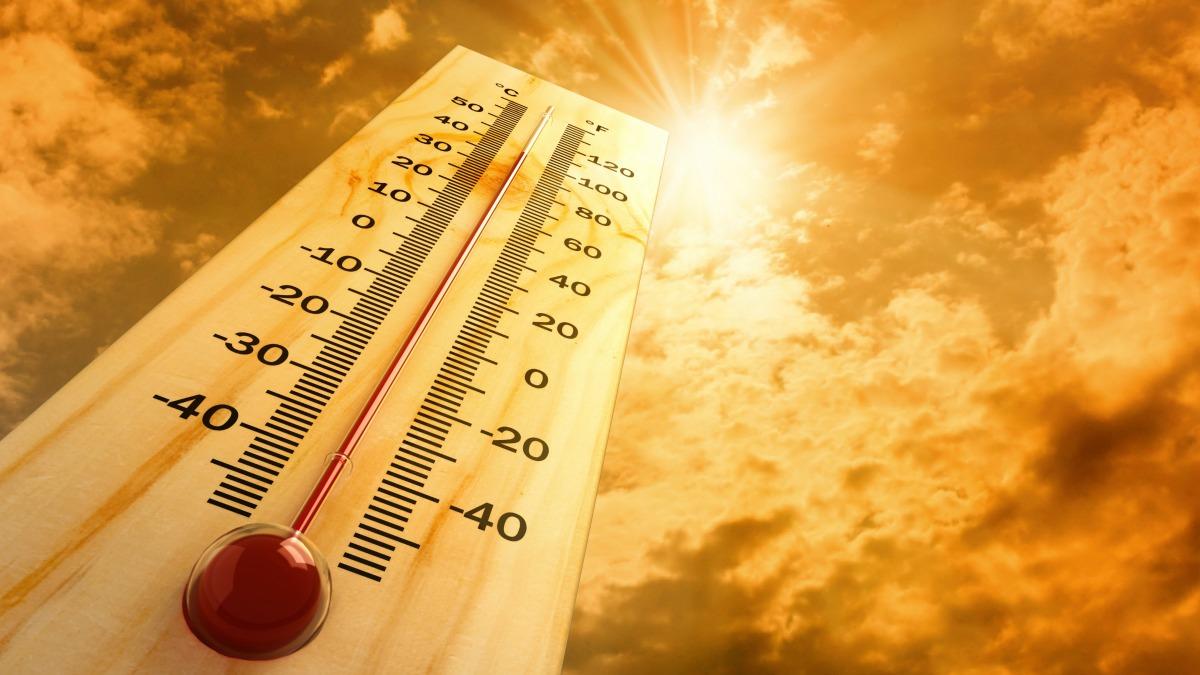
Who is most at risk?
Hot weather is uncomfortable to most, but the following groups are particularly threatened by the very high temperatures we encounter in the summer months:
- elderly people aged over 75 years
- babies, young children
- people with chronic/long-term health conditions, such as diabetes, respiratory disease, circulatory disease
- people who are obese
- people taking certain medicines
- people who work outdoors, in hot/poorly ventilated areas, or engage in physical activity in hot weather
- socially isolated people
- people who are not acclimatized to hot weather, such as tourists from northern countries

How to stay cool, hydrated, and healthy in scorching hot weather
It is one of the primary things to remain hydrated during extreme heat. Consider taking these precautions and measures to stay healthy in scorching weather:
- Drink plenty of water! – the body cools through sweating; on a sweltering day, an adult may lose up to several liters of water. Keep drinking water. Avoid drinking alcohol, hot drinks, and drinks with high sugar content, as they can worsen dehydration. A regular intake of water is a good way of preventing dehydration.
- Keep cool – keep your body cool, stay out of the sun. Eat small meals, preferably fruit, and salads. Wear light-colored and loose clothing made from natural materials like cotton. Take a cool shower or a cold bath if you feel hot. Also – keep your workspace and living space cool. If you do not have air conditioning, shut the curtains and blinds during the day. Stay in the coolest room, and avoid using the stove and oven as much as possible. If your home gets too hot, go to a cooler place – a library, shopping center, cinema, or swimming pool.
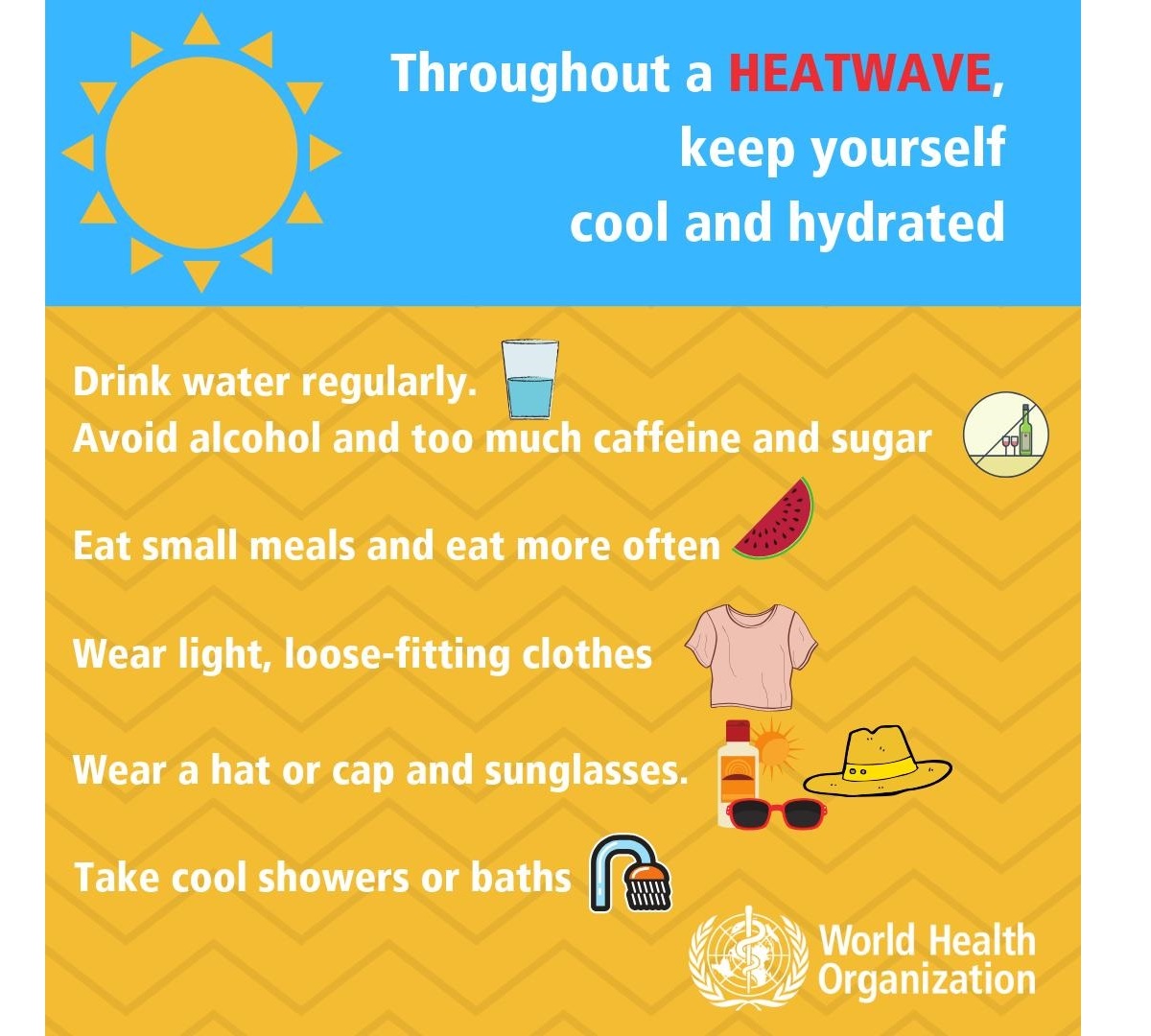
- Keep your food safe! – keep food that needs refrigeration adequately stored! Food spoils rapidly at high temperatures, and you may risk food poisoning if the food is not stored correctly.
- If you need to go out in the sun – protect your skin, use proper sunscreen and clothing to avoid sunburns. Cover your head correctly.
- Know your body, and have a plan – ask your doctor if you have any health conditions that may increase the risk of heat-related illness. Call and consult with your doctor if you are feeling unwell. Call emergency help (know the number!) if you feel unwell!
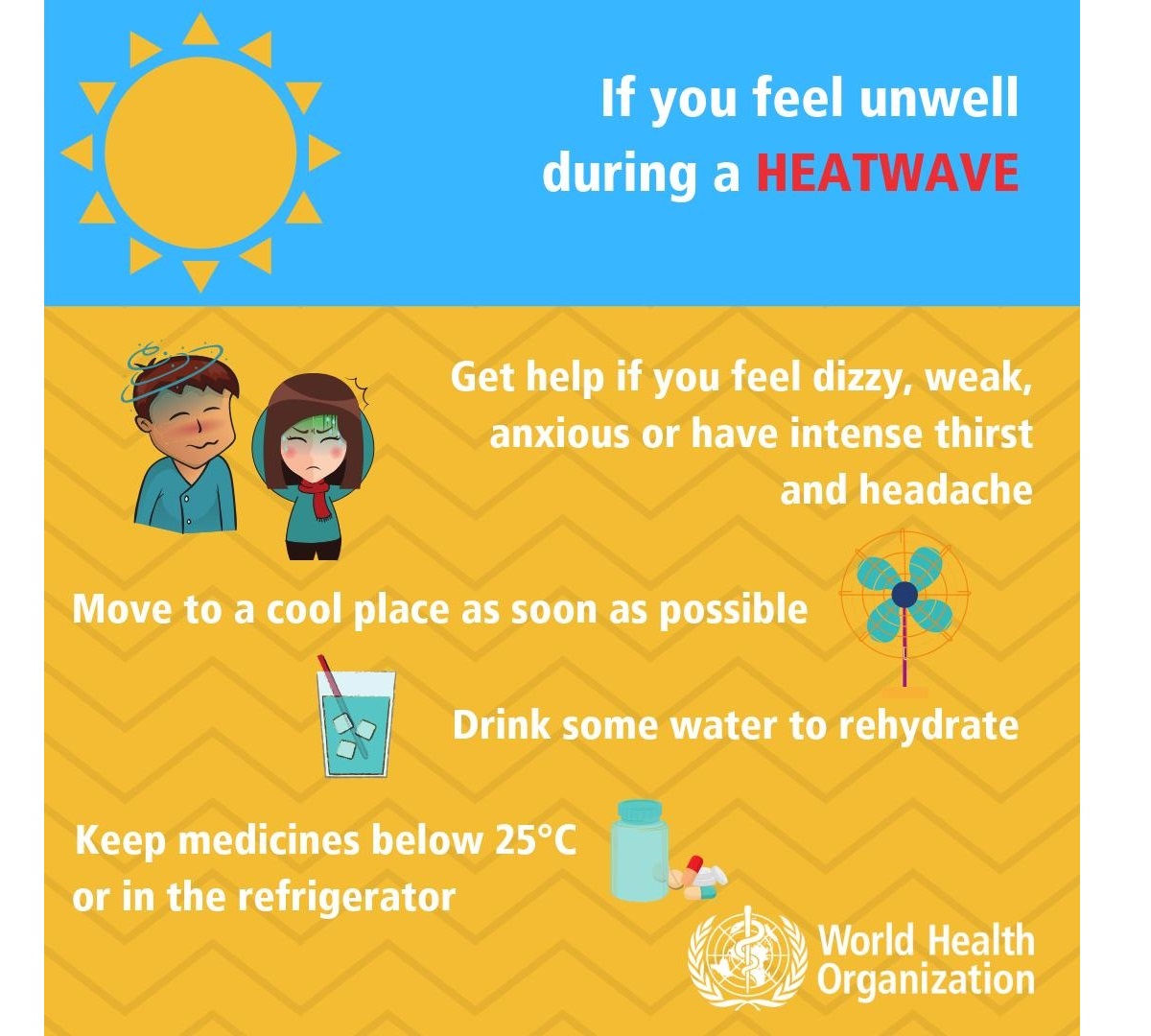
Common heat-related illnesses – symptoms and what to do if it happens
These symptoms’ descriptions and treatments below are informative only – consult with your doctor for details and professional advice:
Dehydration
It occurs when the body loses too much water to maintain normal functions. Symptoms include dizziness, tiredness, irritability, thirst, dark yellow urine, loss of appetite, and fainting. Drink plenty of water or diluted fruit juice. Avoid coffee, alcohol, and sugary drinks. Move to an excellent space to cool off. If you feel unwell, call your doctor or emergency room.
Heat rash
Heat rash is an itchy rash caused by excessive sweating. Move to a cooler, dryer environment, and keep the affected areas dry. Hydrating creams may make the condition worse. Consult with your doctor.
Heat cramps
This happens during strenuous activity when the body sweats and loses water and salt. Heat cramps manifest as muscle pains or spasms. If this happens, stop all activity, move/lie down in a cool place, and raise your legs slightly. Drink water or diluted juice. Have a cool shower or bath, and apply ice packs. Do not return to strenuous activity for several hours. If heat cramps do not subside, seek medical help.
Heat exhaustion
Heat exhaustion is the condition in response to losing excessive amounts of water and salt. Symptoms include heavy sweating, pale skin, fast and weak pulse, fast and shallow breathing, muscle weakness or cramps, tiredness and weakness, dizziness, headache, nausea or vomiting, and fainting.
If heat exhaustion occurs, the body needs to be cooled and rehydrated by moving to a chilled place, lying down, having a cool shower or bath, and placing cool packs under the armpits, groin, or back of the neck. Rehydration should be done by taking small amounts of cool fluids. Medical help is advised if symptoms do not abate within an hour.
Heat stroke
It happens when the body temperature reaches 40.5 °C and is a severe and life-threatening condition! Immediate first aid in lowering body temperature is critical, and an immediate call for an ambulance! Find more information on heatstroke here.
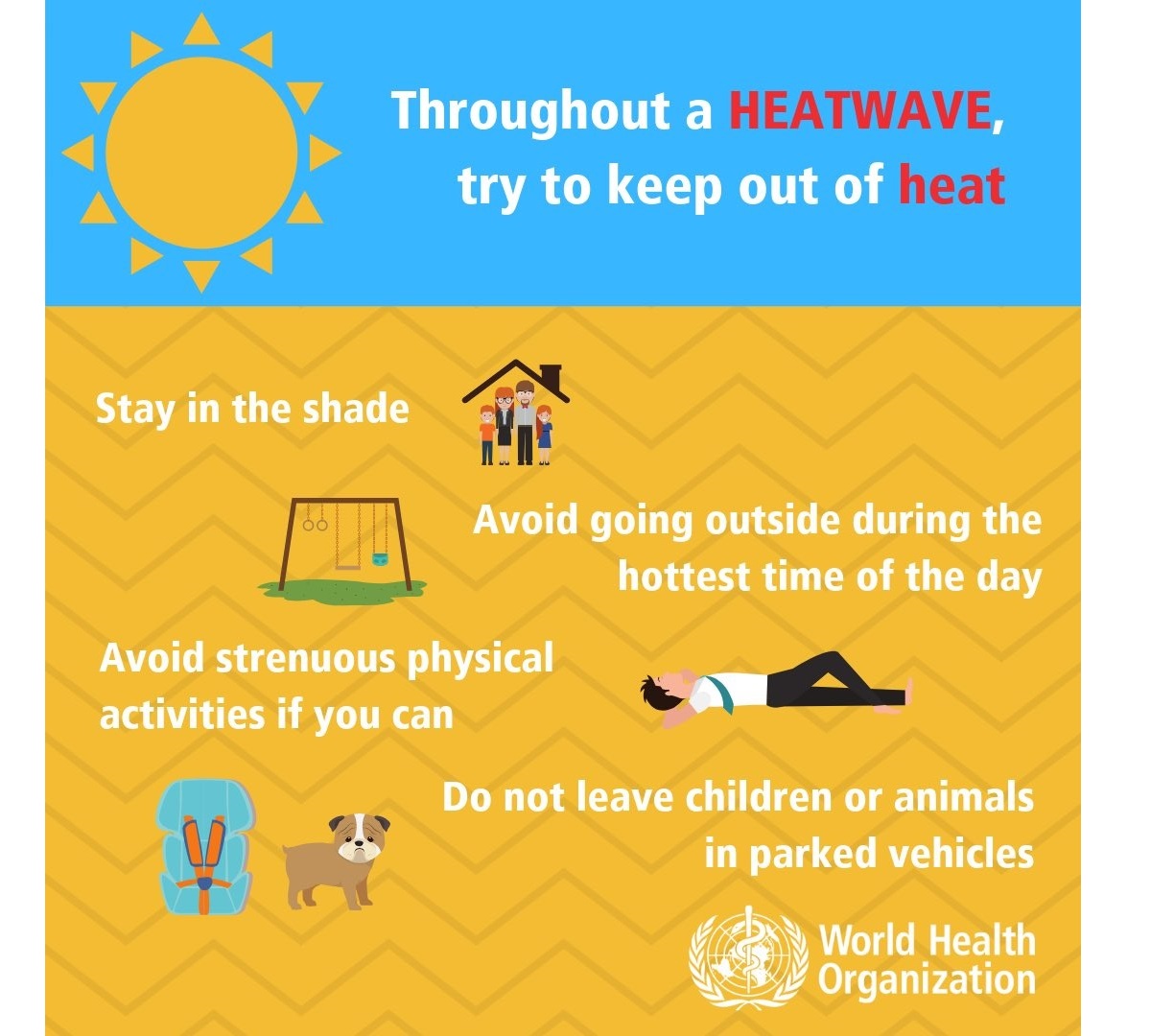
Stay safe!
Windy, Pivotalweather, and Meteociel provided images used in this article.
See also: